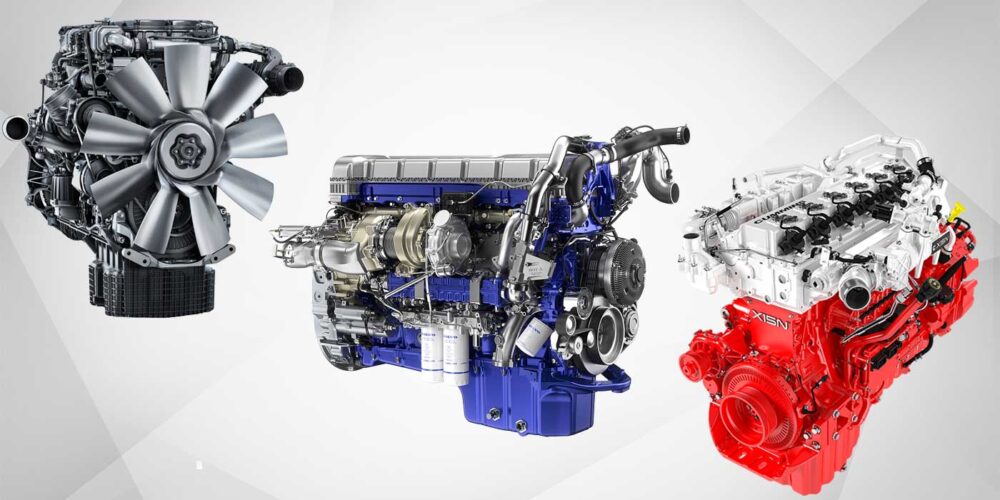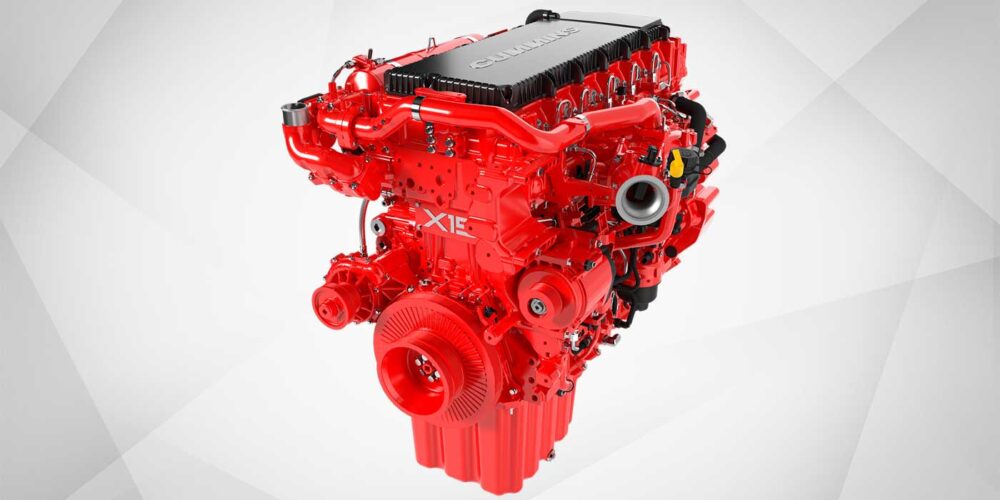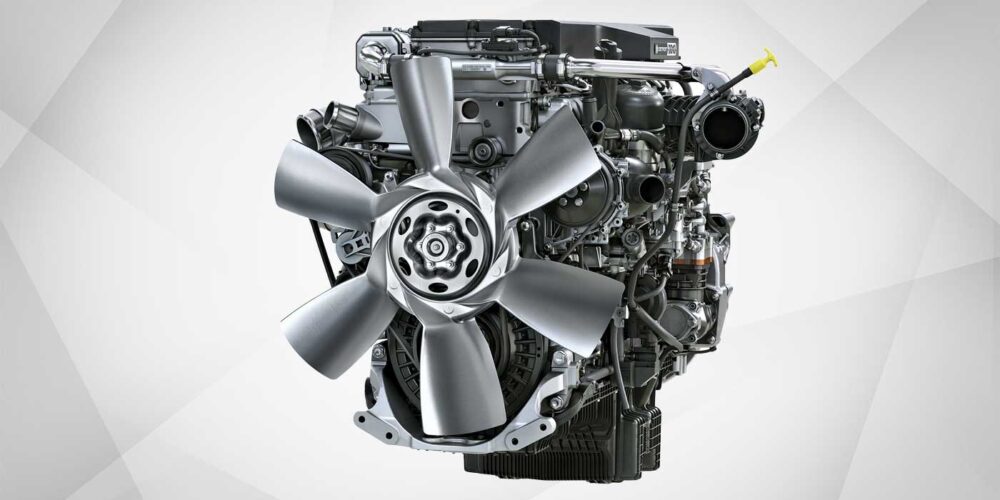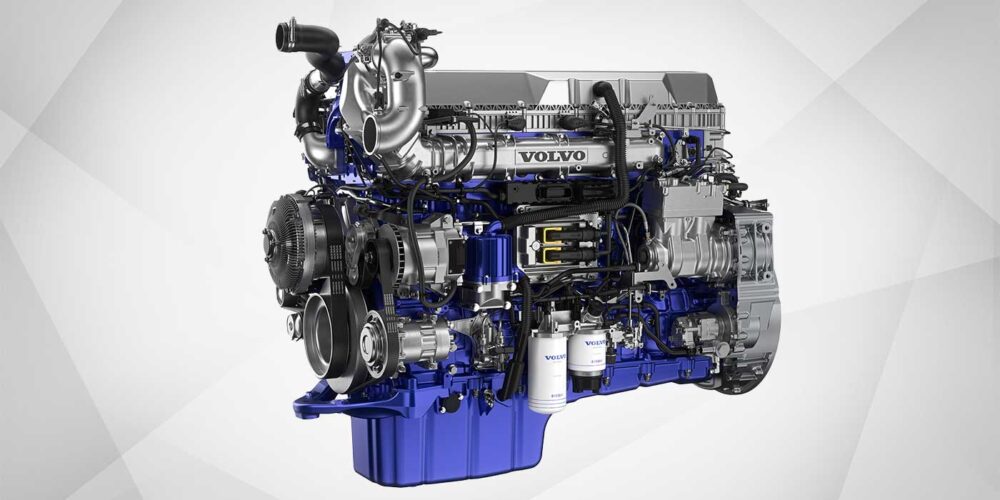Building on their 2024 designs, as they look ahead to the model year (MY) 2025, manufacturers of heavy-duty diesel engines remain focused on improved efficiency. The latest developments also continue to go beyond engines alone and include complete powertrain solutions.
“To drive efficiency, engine and powertrain features complement each other,” said Brad Sutton, executive director of powertrain engineering at Cummins. “The result is lower CO2 output and better fuel economy, and a refinement of the driving experience.”
To develop integrated powertrain solutions, Cummins has joined forces with Meritor through acquisition of the company and through a joint venture with Eaton. “Now we have the ability in house to influence the entire powertrain as a system across a broad range of applications,” Sutton stated. “We’re able to add even more optimization and features to tune the engine and transmission as a system, and to further optimize fuel economy and performance.”
With the announcement of the new Volvo VNL, Volvo Trucks North America detailed enhancements to the Volvo D13 engine and the I-Shift transmission. “Vehicle efficiency transcends engine performance,” said Duane Tegels, product marketing manager for powertrain at Volvo Trucks North America. “It encompasses the synergy between various components, and the transmission plays a pivotal role.”
To drive fuel efficiency benefits of the I-Shift transmission, Tegels related, Volvo engineers made enhancements that improve shift speeds by up to 30%. “The transmission’s ability to optimize gear shifts, reduce energy loss and harmonize power delivery significantly influences vehicle efficiency,” he said, “showcasing how a holistic approach beyond the engine is vital in achieving optimal performance.”
Len Copeland, product marketing manager at Detroit, pointed out that an ongoing focus for the manufacturer in terms of improving fuel economy is spec optimization. “Our goal is to help customers make the best choices for their operating conditions, for example transmission and axle ratio pairing,” he said. “We’re always keeping attributes like efficiency and performance at the top of our target list.”
Engine updates
The Detroit DD13 engine has been updated to improve thermal management and shorten the amount of time it takes an engine to get up to operating temperature, Copeland noted. “One of the main ways we did this was to adjust our idling strategy,” he explained. “In the past, to get temperatures up asymmetric injection would fuel cylinders at different rates. Now, we have made more use of the Thermal Control Valve, which in addition to helping during regenerations, also operates during start up to help get temperatures up to operating levels faster.”
At Cummins, reported Mark Ulrich, director of customer support, a focus on digital solutions for engines is on three software applications, including remote engine health monitoring, over-the-air calibration and software updates, and predictive service. “Digital technology packages come standard with our engines and are compatible with different telematics hardware from partner OEMs, third-party telematics service providers, and our own first-fit Acumen device,” he related.
“By leveraging service, vehicle, and engineering data and combining it with artificial intelligence and machine learning, we have developed our Predictive Service Insights, which allows us to predict component failures up to 90 days in advance,” Ulrich added. “Connectivity and telematics are important because they impact digital capabilities and change the way we approach maintaining vehicles from reactive to proactive.”
At Volvo, Duane Tegels noted, design enhancements to the D13 engine include combustion improvements enabled by using smaller needle control valves in fuel injectors. The change provides for more precise and rapid control over the fuel flow rate out of the injector tip, leading to improved atomization, and better combustion efficiency.
Volvo Trucks has also introduced an improved seven-wave piston, Tegels related, which provides better directional control of the air and fuel mixture to create even more efficient combustion. “Additionally, the piston height was decreased and paired with a longer connecting rod to minimize cylinder sidewall pressure, decreasing friction and improving performance,” he added. “These improvements provide smoother internal movement, reducing parasitic loss and increasing overall engine efficiency.
“The turbo compounding unit on the Volvo D13 engine is a pivotal element in enhancing fuel efficiency as well, so our engineers have focused on opportunities to further optimize its design,” Tegels continued. “To minimize heat loss and increase efficiency, insulation was added to both the turbocharger and the turbo compounding unit. Internally, turbo compounding unit refinements include a smaller compressor and turbine wheel, which enable the system to recover surplus energy more effectively.”
The Volvo D13 also features a variable displacement oil pump, which employs adjustable vanes that dynamically adapt to the engine’s oil pressure demands. “Tailoring the pump’s output to match the engine’s requirements maintains optimal pressure,” Tegels explained. “This adaptability not only enhances engine efficiency by reducing the energy required to drive the pump but also minimizes unnecessary strain on the engine components, resulting in improved fuel economy.”
Emissions requirements
In April 2023, EPA announced a proposal to revise existing standards to reduce greenhouse gas emissions from heavy-duty vehicles in MY 2027 and set new, more stringent standards for MYs 2028 through 2032. The proposed program, known as “Phase 3 greenhouse gas,” builds on the success of two previous rulemakings. The Phase 3 standards would apply to heavy-duty vocational vehicles and tractors.
Work toward meeting the proposed standards by engine manufacturers is already underway. Tegels says that Volvo is committed to decarbonizing transportation by understanding emissions regulations and working to design the cleanest and most efficient engines possible. “Understanding the regulations and how they’ll impact our customers is a top priority as we evaluate engine development,” he said.
“The regulatory landscape is evolving quickly and becoming much more complex,” said Detroit’s Len Copeland. “Anytime we can make improvements to aftertreatment system functionality, it’s a win, and we’re pleased when we can offer continuity in our products and minimize the changes that customers may see.”

















